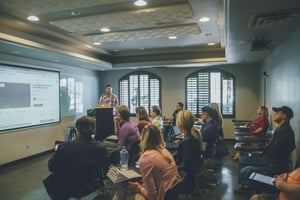ZealiD and DocuSign webinar: QES myths busted
Although e-signatures have seen steady growth in popularity in recent years, the pandemic really challenged the paper culture at its core. It pushed everyone from individuals to big corporations to adopt remote signing.
Having a front row view at the culture and benefits of remote signing today, ZealiD’s Sales Development Manager Katerina Gaitanoglou and DocuSign’s Solutions Consultant Andre Langner hosted a webinar. In the online event, they discussed the key benefits of e-signatures and demonstrated how QES works in practice. But as a side benefit, the webinar revealed some common misconceptions that keep potential users from taking a step towards safer, more efficient signing tools.
What are they?
- It’s easier to just do things on paper
Despite the growth of digital and major difficulties caused by the pandemic, some individuals are determined to stick to paper and stay away from digital signing. Their reasons span from distrust in technology to cost- and efficiency- related concerns. Even so, our experience shows the opposite.“People often think e-signatures are hard to obtain and complex to use. But we have always focused on user experience in our app, allowing our users to sign in just seconds”, reflected our Sales Development Manager Katerina.
Quick signing leads to another advantage: quick data exchange. Comparing electronic signatures to physical ones, which primarily travel by post, remote signing significantly shortens the signing cycle. Together with easy access and high levels of safety, that makes for the most modern and one of the most efficient ways to sign.
- High security comes at a high cost
Another common misbelief is that e-signature safety goes hand in hand with cost. This myth often targets QES, which matches the highest security standard.
But that really isn’t the case. While QES is not much more expensive than SES or AES, it’s much more versatile. The other two signatures may be more common, but they don’t always suffice - especially when the stakes are high. In the meantime, QES serves in hundreds of use cases across all levels of risk. Besides, it’s fully compliant with relevant EU regulations - and future proof.
-
Electronic signatures still involve some form of hand signing
“People often relate electronic signing to finger drawing that you would normally do for a courier or at a post office. Showing how it works truly creates an “a-ha!” moment”, Katerina notes.As the famous saying goes, true genius often lies in simplicity. Modern electronic signatures are based on biometrics - Face or Touch ID. Here, the meaning of “equipment” boils down to a mobile phone - a device we all own and carry with us almost at all times.
Once registered, all a user needs to sign is either hold their phone against their face for facial recognition or hold their finger on a fingerprint sensor. It’s really that simple.
-
E-signatures are hard to integrate
“To adopt remote signing, you don’t need to invent anything new - simply rely on a platform that your users and employees already know and use”, suggests Andre Langner, Solutions Consultant at DocuSign. Indeed, companies all around the world are already accustomed to DocuSign, where they manage internal and external documentation on a regular basis.In our mission to give users easy access to safe and efficient e-signing tools, ZealiD offers a prebuilt integration into DocuSign and multiple other platforms that can be easily enabled and multiple other platforms. That way, users can enjoy the benefits of remote signing - combined with full compliance, high security standards, and recognition in all EU states.
-
Obtaining a certificate takes a lot of time and effort
If qualified signing is so safe and reliable, one should go through a long security check before they get a certificate, right?
No - not with ZealiD, anyway. Contrary to such thinking, we offer fast and easy registration on a self-service basis. That way, users can register in the ZealiD app at any time and place that suits them. It’s a straight-forward process that takes only 3 minutes to complete and is available in 24 languages.
Once registered, users gain easy access to trust services that are fully compliant throughout the EU.
Learn more:



